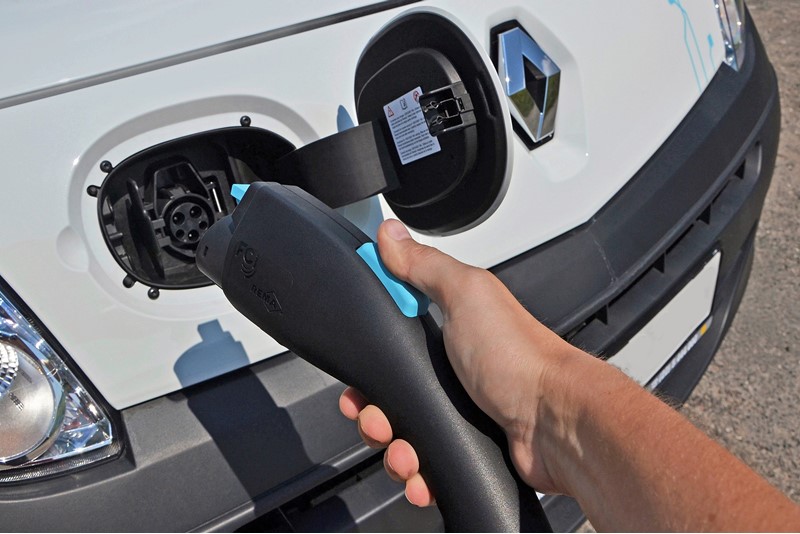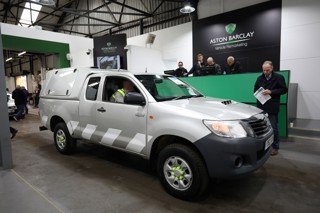Whether you buy, lease or rent your commercial vehicles (CVs), you can’t escape the importance of residual values (RVs) when it comes to calculating the fleet’s financial impact on your business.
Different funding methods carry varied levels of risk. But having a good handle on costs from day one should pay dividends at de-fleet time.
Luckily, there is robust industry that helps to manage the residual values of vehicles, which works in harmony with remarketers.
Fleet operators are crucial to keeping this ecosystem working, as many of the vans and trucks that pass through auction houses each week come from businesses with large fleets.
Used vehicle prices are affected by a multitude of factors including supply, condition, mileage, specification and external issues such as seasonal demand and political uncertainty.
A strong market performance can always allow for more competitive lease rates to be offered, giving confidence that vehicles are going to achieve or exceed their residual value.
However, RVs can be difficult to determine and are often the biggest cost to fleets over time. Dependent on the vehicle and overall market, depreciation can take place at varying levels and is difficult to predict. Some look to eliminate this risk by working with a leasing partner.
“Outsourcing means the calculations are made by experts in the field, spreading the risk across a larger portfolio and helping to make executive decisions, leaving fleet managers to focus on running their business,” says Hitachi Capital Vehicle Solutions managing director Jon Lawes.
In 2016, a record number of new vans were sold and experts predicted a large number of them would saturate the resale market this year, pushing down prices of low mileage, good condition examples.
But many fleets decided to hold on to their vehicles for longer, meaning the used stock coming to auction was higher mileage 2015 models in poorer condition.
Such vehicles achieve lower prices, but increase demand for newer, lower mileage vehicles and, therefore, push up prices for the more desirable ones.
Steve Botfield, commercial vehicle editor at Cap HPI, says: “Eventually we will see these 2016 models coming to market and things will level out. September is usually a quiet month. But, once we get past October, it’s likely there will be ample choice in the market. More choice means prices won’t be where they were last year.”
While demand for Euro 6 diesel vans increased following the announcement that some cities would seek to ban older vehicles, or charge them a daily fee, the knock-on effect on residuals for Euro 5 vehicles was not as significant as feared.
“There are plenty of areas where Euro 5 diesel vehicles, and even older ones, can still operate without restrictions. All that happens in towns and cities with a clean air zone is the older vehicles are pushed out to those less restricted areas,” explains Botfield.
Overall, the average price of used vans rose by 11.3% in the 12 months to the end of June 2019 to £4,616, according to the market insights report from auction firm Aston Barclay.
That equates to a £469 average price rise for used vans from Q2 2018 to Q2 2019. Year-on-year (YOY) average used van mileages rose from 89,113 miles in Q2 2018 to 91,591 in Q2 2019, while average age fell from 76.9 months to 65.4 months over the same period.
The YOY trend continued into 2019 where used van prices rose in Q2 versus Q1 by £83 to £4,616. However, mileage fell from 96,706 miles to 91,591 miles, and average age also fell from 68.2 months to 65.4 months.
“We have seen a change in the profile of stock coming into the auction over recent months,” says Geoff Flood, Aston Barclay’s commercial vehicle sales manager.
“Used vans are generally younger and with fewer miles on the clock which may signal a change in fleet replacement cycles as well as vehicles travelling fewer miles,” he adds.
Like the current LCV and car markets, the HGV and Plant market is susceptible to seasonal fluctuations, volume, condition and the various legal policy implementations pertinent to the sector.
“As often happens in the HGV market, we’ve seen a lot of duplicate stock from a particular fleet vendor, so mileage and condition have come into play more than they may otherwise have done,” says Chris Mynott, national HGV manager at Manheim.
He says you can’t always rely on valuation guides for HGV and Plant, because they don’t always fit the product.
“We prefer to use market intelligence, past results and our own market knowledge and expertise to put values to stock, and many of the HGV vendors are on board with this and willing to listen to our advice,” Mynott adds.
Late 7.5-tonne tippers continue to be the most sought-after product at auction and there remains few of them around.
Buyers are paying top money for them, even for examples dating back to 2012/13, according to Mynott.
The remarketing company has also seen Euro 6-compliant trucks continue to make strong money. However, Mynott adds that high mileage vehicles are struggling to find a new home, even if they’re Euro 6, or sold at what might seem a very good price.
“Spec is everything and even if 9/10 things are right, it’s the important final factor that can make all the difference,” says Mynott.
Online auctions provide shorter turnarounds
Leasing giant Zenith has agreed a new remarketing deal with Manheim that will see all its defleeted vans sold using a digital-first approach, illustrating the increasing tendancy for vehicles to be remarketed online.
As well as avoiding unnecessary movement costs, Manheim says this solution ensures the largest possible active buyer audience, highest sale values and optimum speed of sale.
This benefits fleets that have shared profit arrangements on residual values, but could also result in lower leasing prices if the improved resell values are sustained.
As part of the deal, Manheim will collect the vans and take them to a dedicated CV auction centre. Within 24 hours of arrival, the vans will have branding removed, be valeted, inspected and photographed using 360-degree turntables to ensure that online buyers get a full and accurate overview of vehicle condition.
Supporting the online sales programme, will be auctions where both physical and online buyers will have the opportunity to bid for Zenith stock.
Mercedes-Benz Vans is also investigating the use of digital auctions after achieving strong sale values in its first e-Auction, staged by BCA.
The auction sold more than 90% of the available stock and achieve 103% of reserve, as buyers competed strongly online.
The digital sale was part of a broader end-to-end partnership with BCA that spans collection, de-fleet and remarketing from its operation in Doncaster.
 Shifting from diesel to electric
Shifting from diesel to electric
The transition to full-electrification is moving at a fast pace, but is still likely to take several years. So, the industry is expecting RVs to remain strong across all fuel types.
“There will still be demand for new diesel vehicles for the foreseeable future. The latest Euro 6 standard diesels are far cleaner than previous models and they are typically not penalised for entering clean air zones,” says Lawes.
Currently, around 96% of vans on the UK’s roads are diesel-powered. That has substantially grown from 56% in 1995. While registrations of electric vans are beginning to gain traction, Botfield believes there will continue to be strong demand for used diesel vans in the foreseeable future.
He says: “Electric vans don’t enable people to do their job in the same way as a diesel. There are some urban cases where it can work, but, for many, once you load a van up with racking and tools the weight penalty is going to affect the already limited range.
“When these vehicles do get offered in the used market, due to the cost, range, infrastructure, performance and the choice available, these will limit the audience that is prepared to dip its toe into this alternative power source.”
Air-con benefits more than just the driver
Data from BCA reveals that LCVs fitted with air-con outperform those without the option by a considerable margin in values achieved, performance against guide values and conversion rates.
While air-con for cars is commonplace, it remains an option for LCVs and is not widely fitted across the UK’s van parc.
Used LCVs with air-con are therefore very desirable at remarketing time and values typically outstrip standard vehicles by a considerable distance – well in excess of £1,000 on average.
Jon Gilbert, BCA business development director, LCVs, says: “While it is to be expected that air conditioning will add value in the used LCV market, the real uplift in value now appears to compare very favourably with the front-end cost of specifying this option (typically £600-£900).
“LCVs with air conditioning are highly valued by professional buyers because these are the vehicles their retail customers want to buy. For vans doing longer distance delivery work, or in a tradesman’s vehicle that doubles as the family transport at the weekend, air-con is exceptionally appealing.”
The sales conversion uplift for large panel vans with air-con was a substantial 15.5%.
“Up-speccing commercial vehicles at acquisition time can deliver real benefits to van operators. A better specification will make a van more desirable and saleable, and higher-spec vehicles will often sell the first time they are offered, improving cash-flow for the seller,” adds Gilbert.




















Login to comment
Comments
No comments have been made yet.